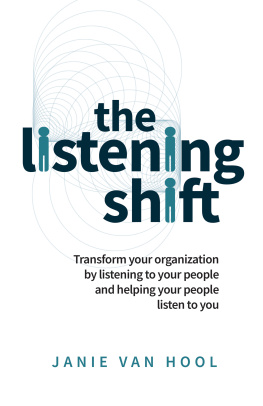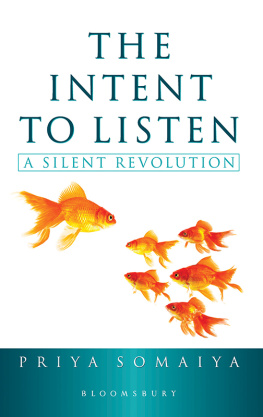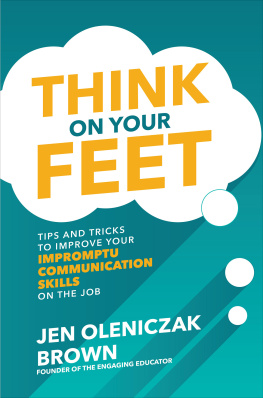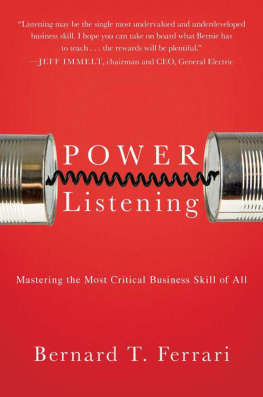Copyright 2020 by Rockridge Press, Emeryville, California
No part of this publication may be reproduced, stored in a retrieval system, or transmitted in any form or by any means, electronic, mechanical, photocopying, recording, scanning, or otherwise, except as permitted under Sections 107 or 108 of the 1976 United States Copyright Act, without the prior written permission of the Publisher. Requests to the Publisher for permission should be addressed to the Permissions Department, Rockridge Press, 6005 Shellmound Street, Suite 175, Emeryville, CA 94608.
Limit of Liability/Disclaimer of Warranty: The Publisher and the author make no representations or warranties with respect to the accuracy or completeness of the contents of this work and specifically disclaim all warranties, including without limitation warranties of fitness for a particular purpose. No warranty may be created or extended by sales or promotional materials. The advice and strategies contained herein may not be suitable for every situation. This work is sold with the understanding that the Publisher is not engaged in rendering medical, legal, or other professional advice or services. If professional assistance is required, the services of a competent professional person should be sought. Neither the Publisher nor the author shall be liable for damages arising herefrom. The fact that an individual, organization, or website is referred to in this work as a citation and/or potential source of further information does not mean that the author or the Publisher endorses the information the individual, organization, or website may provide or recommendations they/it may make. Further, readers should be aware that websites listed in this work may have changed or disappeared between when this work was written and when it is read.
For general information on our other products and services or to obtain technical support, please contact our Customer Care Department within the United States at (866) 744-2665, or outside the United States at (510) 253-0500.
Rockridge Press publishes its books in a variety of electronic and print formats. Some content that appears in print may not be available in electronic books, and vice versa.
TRADEMARKS: Rockridge Press and the Rockridge Press logo are trademarks or registered trademarks of Callisto Media Inc. and/or its affiliates, in the United States and other countries, and may not be used without written permission. All other trademarks are the property of their respective owners. Rockridge Press is not associated with any product or vendor mentioned in this book.
Interior and Designer: Scott Petrower
Art Producer: Samantha Ulban
Editor: Sam Eichner
Production Editor: Emily Sheehan
All images used under license Shutterstock.
ISBN: Print 978-1-64739-064-8 | eBook 978-1-64739-065-5
R0
To my family, especially my husband and my mom
thank you for your immense love and all the communication
challenges youve helped me overcome.
Contents
As a psychotherapist, I work with clients of all ages, including individuals, couples, families, and parents. Most of my work involves helping people improve their communication skills and relationships with those around them. The techniques I use vary depending on each clients needs, but regardless of the approach, active listening is always an integral part of any therapy. Without it, I cant help my clients feel heard and important, nor can I build the rapport thats so key to a successful client-therapist relationship.
Moreover, I routinely teach my clients this important skill. The results are significant: improvements in the way they perceive themselves, the way they interact with others, and the way others perceive and treat themboth in their professional and personal lives.
So, what does active listening actually mean? The concept sounds simple, but it can be quite challenging to implement. To listen actively means to listen fully, with an active body and mind, in response to a speakers message. Its a way of listening that helps us truly comprehend the speakers message and makes them feel heard; its a way of getting through to others that begins with understanding their needs. Most importantly, its a skill that enables us to connect genuinely with others, handle difficult situations, create personal and professional opportunities, and strengthen relationships, whether at home or in the workplace. Ultimately, being a good communicator starts with active listening.
With the Internet and the ubiquity of smartphones, we have fewer opportunities to practice these skills. Weve all experienced the anxieties that can stem from communicating digitallywhen you send a vaguely sarcastic text message, publish a misunderstood social media post, or receive a work email, the tone of which is difficult to decipher. By contrast, when we communicate face-to-face, we have the simple advantage of seeing a person react. To determine how we should convey our messages, we observe things like the listeners body language, facial expressions, and attention level. These details help us decide if we need to be more tactful, stop speaking for the moment, or focus on the listener. Face-to-face interactions allow us to check in on and prepare a listener for receiving our messages.
As more interpersonal communication moves from the real world to digital media, we conduct fewer of our interactions face-to-faceand as a result, we have fewer chances to create the kinds of deep connections active listening facilitates. In this context, active listening, and related communication skills, may be more important now than ever.
This book is designed to help you become a stronger listener and communicator in both personal and professional settings. In , Ill provide 30 tools to help you build on and apply those fundamentals to your everyday life.
In this section, well cover the basicsthe general principles of active listening, why its such an important skill, how you can apply it, and the challenges inherent to doing so. By the time you finish this section, youll be more than ready to work on the tools in .
Lets get listening!
Active listening is a somewhat nebulous term, with a number of different meanings and applications. In this chapter, well untangle the various definitions and, for the purposes of this book, adopt a working definition. Well also delve deeper into the benefits of active listening and the specific goals you can accomplish by becoming a stronger listener.
The Difference Between Listening and Really Listening
There are many ways we can listen, including critical listening, reflective listening, and passive listening. Lets take a look at each of these and how they relate to active listening.
Critical listening requires the most effort. It involves processing a message while using your own judgment to differentiate between facts and opinions. It also requires creating your own analysis and opinions of the message being conveyed. Its most commonly used in situations when you have to evaluate information and develop an opinion, such as listening to the news or a political speech.
Reflective listening entails using your own words to repeat back what you heard the speaker say. It does not require you to analyze or judge the speakers words. Instead, the purpose of this kind of listening is to let the speaker know that you have received and understood their message.












